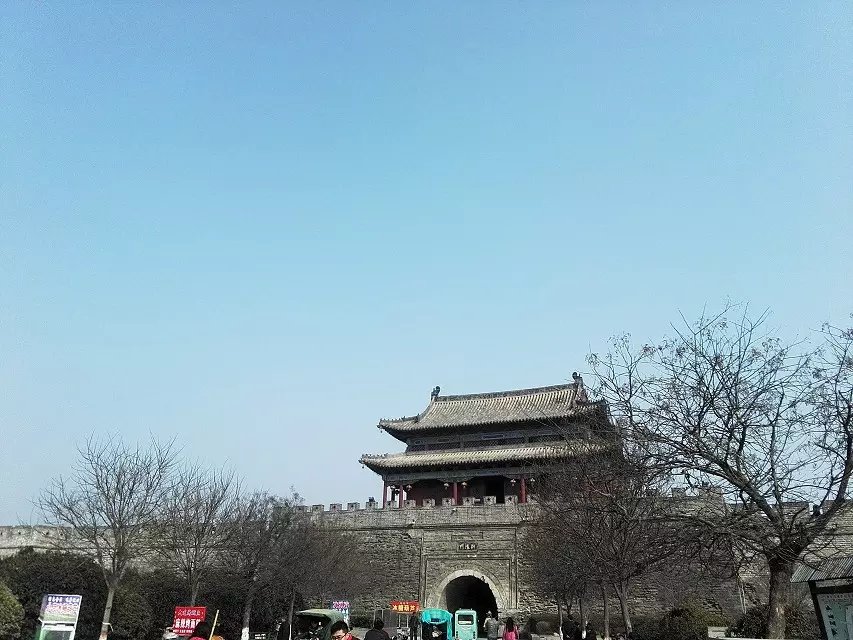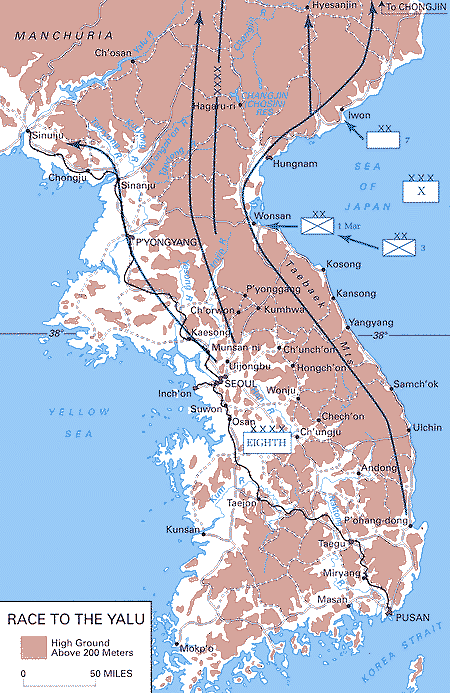|
59th Division (People's Republic Of China)
The 59th Division was a military formation of the People's Liberation Army, which was created in February 1949 under ''the Regulation of the Redesignations of All Organizations and Units of the Army'', issued by the Central Military Commission on November 1, 1948, basing on the 2nd Division, 1st Column of Huadonng Field Army. Its origin can be traced back to the Jiangnan anti-Japanese volunteers' Army(lang-zh:江南抗日义勇军) formed in May 1939. Under the command of PLA 20th Corps it took part in the Chinese civil war. The division joined the flag of People's Volunteer Army (Chinese People's Volunteers (CPV) or Chinese Communist Forces (CCF)) during the Korean War. It was still a component of the 20th Corps, consisting of the 175th, 176th, and 177th Regiments. The 59th Division attacked Fox Company, 7th Marines north of Sinhung-ni at Toktong Pass during the Battle of Chosin Reservoir. Underestimating U.S air and artillery power, the 59th Division experienced over 1,000 k ... [...More Info...] [...Related Items...] OR: [Wikipedia] [Google] [Baidu] |
20th Army (People's Republic Of China)
The 20th Group Army is a military formation of the People's Liberation Army Ground Force, stationed in the Jinan Military Region. It consists of two manoeuvre brigades with other attached or otherwise organic units. For some time after its formation in 1949, the army consisted of three divisions. In mid 2017, it was reported by ''China Defense Blogspot'' that the army would disband. History The 20th Army started as the communist Red Army Eastern Fujian Independent Division, a collection of guerrilla forces operating in Eastern Fujian Province during the 1920s. After the Japanese invasion, it was incorporated into the New Fourth Army as Third Support Group, 6th Regiment. It was first under the command of Jiangnan Headquarters, and then Subei Headquarters with a nickname, "Jiangnan Anti-Japanese Righteous and Brave Army" ( Jiangnan Kangri Yiyong Jun ). In October 1940, it defeated the Nationalist's anti-communist elements in the battle of Yellow Bridge (Huang Qiao). After the Wann ... [...More Info...] [...Related Items...] OR: [Wikipedia] [Google] [Baidu] |
Zhejiang
Zhejiang ( or , ; , also romanized as Chekiang) is an eastern, coastal province of the People's Republic of China. Its capital and largest city is Hangzhou, and other notable cities include Ningbo and Wenzhou. Zhejiang is bordered by Jiangsu and Shanghai to the north, Anhui to the northwest, Jiangxi to the west and Fujian to the south. To the east is the East China Sea, beyond which lies the Ryukyu Islands. The population of Zhejiang stands at 64.6 million, the 8th highest among China. It has been called 'the backbone of China' due to being a major driving force in the Chinese economy and being the birthplace of several notable persons, including the Chinese Nationalist leader Chiang Kai-shek and entrepreneur Jack Ma. Zhejiang consists of 90 counties (incl. county-level cities and districts). The area of Zhejiang was controlled by the Kingdom of Yue during the Spring and Autumn period. The Qin Empire later annexed it in 222 BC. Under the late Ming dynasty and the Qing ... [...More Info...] [...Related Items...] OR: [Wikipedia] [Google] [Baidu] |
Infantry Divisions Of The People's Volunteer Army
Infantry is a military specialization which engages in ground combat on foot. Infantry generally consists of light infantry, mountain infantry, motorized infantry & mechanized infantry, airborne infantry, air assault infantry, and marine infantry. Although disused in modern times, heavy infantry also commonly made up the bulk of many historic armies. Infantry, cavalry, and artillery have traditionally made up the core of the combat arms professions of various armies, with the infantry almost always comprising the largest portion of these forces. Etymology and terminology In English, use of the term ''infantry'' began about the 1570s, describing soldiers who march and fight on foot. The word derives from Middle French ''infanterie'', from older Italian language, Italian (also Spanish) ''infanteria'' (foot soldiers too inexperienced for cavalry), from Latin ''wikt:infans, īnfāns'' (without speech, newborn, foolish), from which English also gets ''wikt:infant, infant' ... [...More Info...] [...Related Items...] OR: [Wikipedia] [Google] [Baidu] |
Military Units And Formations Of China In The Korean War
A military, also known collectively as armed forces, is a heavily armed, highly organized force primarily intended for warfare. It is typically authorized and maintained by a sovereign state, with its members identifiable by their distinct military uniform. It may consist of one or more military branches such as an army, navy, air force, space force, marines, or coast guard. The main task of the military is usually defined as defence of the state and its interests against external armed threats. In broad usage, the terms ''armed forces'' and ''military'' are often treated as synonymous, although in technical usage a distinction is sometimes made in which a country's armed forces may include both its military and other paramilitary forces. There are various forms of irregular military forces, not belonging to a recognized state; though they share many attributes with regular military forces, they are less often referred to as simply ''military''. A nation's military may f ... [...More Info...] [...Related Items...] OR: [Wikipedia] [Google] [Baidu] |
60th Motorized Infantry Brigade (People's Republic Of China)
The 60th Medium Combined Arms Brigade is one of the six combined arms brigades of the 83rd Group Army under the Central Theater Command. The 60th was converted from a division to a brigade as part of the PLA modernization efforts of the late 1990s. The predecessor 60th Division() was created in 1949 as part of the 20th Corps. It consisted of the 178th, 179th, and 180th Regiments. It entered Korea along with the rest of the 20th Corps as part of the People's Volunteer Army (Chinese People's Volunteers (CPV) or Chinese Communist Forces (CCF)) in September 1950. Artillery Regiment, 60th Division was activated at the same time. The 60th Division moved toward a blocking position near Koto-ri, south of "Hell-Fire Valley" during the Battle of Chosin Reservoir. The division withdrew from Korea in October 1952 and garrisoned in Shanghai. In December, the division moved to Huangyan-Haimen area in Zhejiang for coastal security missions. In March 1953, the division was reorganized: ... [...More Info...] [...Related Items...] OR: [Wikipedia] [Google] [Baidu] |
Shangqiu
Shangqiu (), alternately romanized as Shangkiu, is a city in eastern Henan province, Central China. It borders Kaifeng to the northwest, Zhoukou to the southwest, and the provinces of Shandong and Anhui to the northeast and southeast respectively. Its population was 7,816,831 inhabitants as of the 2020 Chinese census whom 2,831,814 lived in the built-up (''or metro'') area made up of two urban districts (Liangyuan and Suiyang) and Yucheng county now being conurbated. Shangqiu and surrounding area was an important base for the Shang dynasty (c. 1600 – c. 1046 BC), and the city itself was established more than three millennia ago. Shangqiu has grown significantly in recent years. It is located at an important location at the junction of several major railways, making it a major regional transportation hub. History The history of Shangqiu ("Hills of Shang") is closely related to the very beginning of Chinese history. The tradition dates back to the Three August Ones and Five Emp ... [...More Info...] [...Related Items...] OR: [Wikipedia] [Google] [Baidu] |
1st Army (People's Liberation Army)
First Army may refer to: China * New 1st Army, Republic of China * First Field Army, a Communist Party of China unit in the Chinese Civil War * 1st Group Army, People's Republic of China Germany * 1st Army (German Empire), a World War I field Army * 1st Army (Wehrmacht), a World War II field army * 1st Panzer Army * 1st Parachute Army (Wehrmacht) Russia and the Soviet Union * 1st Army (Russian Empire) * 1st Red Banner Army * 1st Shock Army * 1st Guards Tank Army (Russia) Others * First Allied Airborne Army * First Australian Army * 1st Army (Austria-Hungary) * First Army (United Kingdom) * First Army (Bulgaria) * First Canadian Army * 1st Army (France) * First Army (Greece) * First Army (Hungary) * First Army (Italy) * First Army (Japan) * First Army (Ottoman Empire) * First Polish Army (1920) * First Polish Army (1944–1945) * First Army (Romania) * First Army (Serbia) * First Army (Turkey) * First Army (United Arab Republic) * First United States Army * 1st Army (Kingdom of Yug ... [...More Info...] [...Related Items...] OR: [Wikipedia] [Google] [Baidu] |
Henan
Henan (; or ; ; alternatively Honan) is a landlocked province of China, in the central part of the country. Henan is often referred to as Zhongyuan or Zhongzhou (), which literally means "central plain" or "midland", although the name is also applied to the entirety of China proper. Henan is a birthplace of Han Chinese civilization, with over 3,200 years of recorded history and remained China's cultural, economic and political center until approximately 1,000 years ago. Henan Province is home to many heritage sites, including the ruins of Shang dynasty capital city Yin and the Shaolin Temple. Four of the Eight Great Ancient Capitals of China, Luoyang, Anyang, Kaifeng and Zhengzhou, are in Henan. The practice of tai chi also began here in Chen Jia Gou Village (Chen style), as did the later Yang and Wu styles. Although the name of the province () means "south of the ellowriver.", approximately a quarter of the province lies north of the Yellow River, also known as the Hu ... [...More Info...] [...Related Items...] OR: [Wikipedia] [Google] [Baidu] |
Kaifeng
Kaifeng () is a prefecture-level city in east-central Henan province, China. It is one of the Eight Ancient Capitals of China, having been the capital eight times in history, and is best known for having been the Chinese capital during the Northern Song dynasty. As of 31 December 2018, around 4,465,000 people lived in Kaifeng's Prefecture, of whom 1,652,000 lived in the built-up (or metro) area made of Xiangfu, Longting, Shunhe Hui, Gulou and Yuwantai Districts. Located along the Yellow River's southern bank, it borders the provincial capital of Zhengzhou to the west, Xinxiang to the northwest, Shangqiu to the east, Zhoukou to the southeast, Xuchang to the southwest, and Heze of Shandong to the northeast. Kaifeng is also a major city in the world by scientific research outputs as tracked by the Nature Index. The city is home to a campus of Henan University, one of the national key universities in the Double First Class University Plan. Names The postal romanization for the ... [...More Info...] [...Related Items...] OR: [Wikipedia] [Google] [Baidu] |
Battle Of Chosin Reservoir
The Battle of Chosin Reservoir, also known as the Chosin Reservoir Campaign or the Battle of Lake Changjin (), was an important battle in the Korean War. The name "Chosin" is derived from the Japanese pronunciation "''Chōshin'', instead of the Korean pronunciation. The battle took place about a month after the People's Republic of China entered the conflict and sent the People's Volunteer Army (PVA) 9th Army to infiltrate the northeastern part of North Korea. On 27 November 1950, the Chinese force surprised the US X Corps commanded by Major General Edward Almond in the Chosin Reservoir area. A brutal 17-day battle in freezing weather soon followed. Between 27 November and 13 December, 30,000 United Nations Command troops (later nicknamed "The Chosin Few") under the field command of Major General Oliver P. Smith were encircled and attacked by about 120,000 Chinese troops under the command of Song Shilun, who had been ordered by Mao Zedong to destroy the UN forces. ... [...More Info...] [...Related Items...] OR: [Wikipedia] [Google] [Baidu] |
%2C_King_of_Wuyue.jpg)




